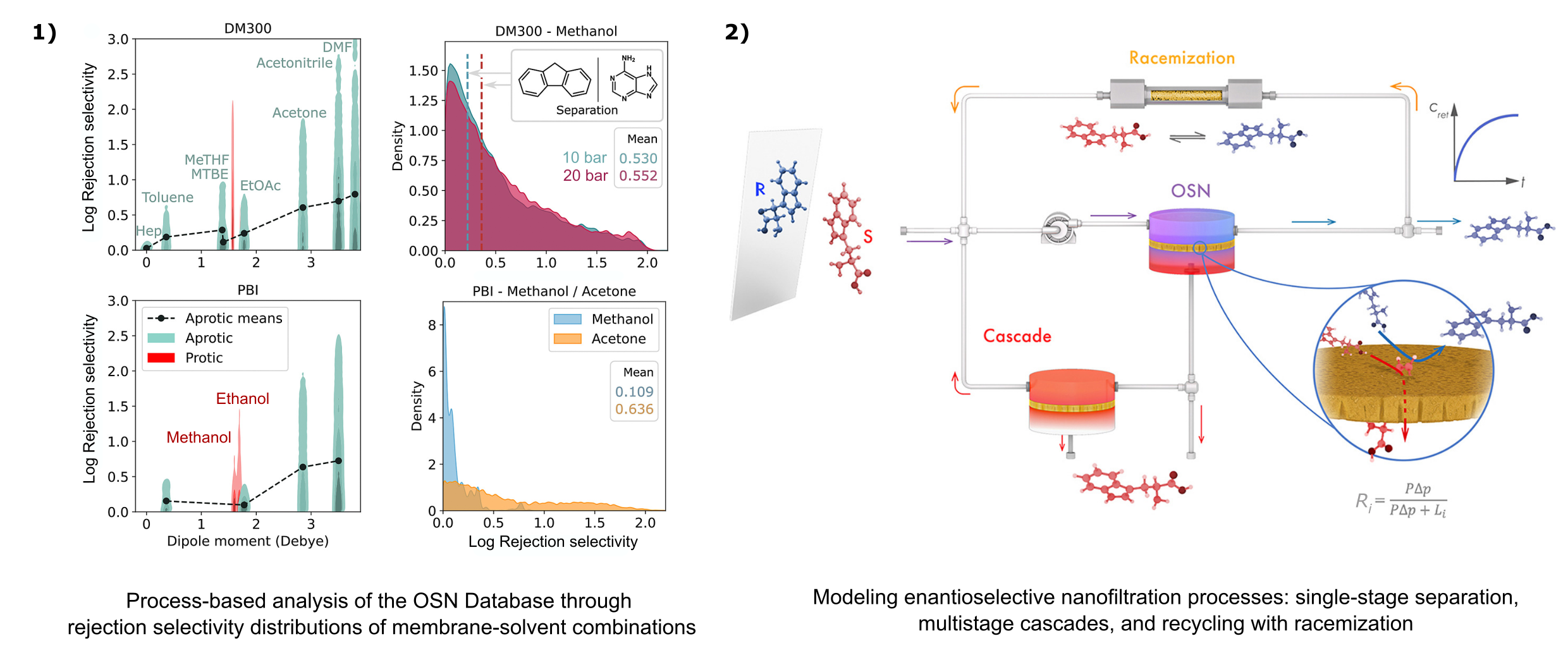Breadcrumb
- Home
- Publications
- Proceedings
- 2024 AIChE Annual Meeting
- Separations Division
- Membrane Process Development and Process Intensification
- (44b) Sustainable Nanofiltration Processes through Multiscale Modeling and Multi-Objective Optimization

We introduce a comprehensive framework for the data-driven and model-based systems engineering of nanofiltration processes. Multiscale steady-state and dynamic models were developed for structurally diverse nanofiltration cascades using a combination of machine learning-based solute rejection prediction and mechanistic transport models [1,2]. A multi-objective optimization approach was employed to characterize the purity-recovery trade-off in multistage nanofiltration systems.
A process-based transformation of the OSN Database (www.osndatabase.com) enabled a novel multiscale approach to nanofiltration efficiency description [3]. Rejection selectivity distributions were examined for the categorical comparison of separation performance across different membranes and solvents (Figure 1). Applying dynamic process models, we performed the techno-economic and sustainability analysis of the downstream extraction and purification steps of an algal bioprocess, identifying optimal operating regimes through green metrics analysis [4]. As a specific case study, we also present the first comprehensive model-based assessment of enantioselective organic solvent nanofiltration processes [1]. Dynamic models for side-stream recycling and in situ racemization allowed a detailed feasibility analysis of membrane-based stereochemical resolution processes (Figure 2). Simulation-based design space exploration and optimization provided insights into membrane characteristics crucial for efficient separations. Comparative and quantitative process performance examples were examined for theoretical rejection scenarios and extended to cases from the literature of chiral membranes. Model-based and data-driven prediction tools on www.osndatabase.com aim to assist researchers in connecting material development results with early-stage process performance assessments. Our research contributes to bridging the gap between materials science and sustainable process development by providing guidelines for future endeavors in the field.
[1] Beke, A.K.; Szekely, G. Journal of Membrane Science, 2022, 663, 121020.
[2] Ignacz, G.; Alqadhi, N.; Szekely, G. Advanced Membranes, 2023, 3, 100061.
[3] Ignacz, G.; Beke, A.K.; Szekely, G. Journal of Membrane Science, 2023, 674, 121519.
[4] Overmans, S.; Ignacz, G.; Beke, A.K.; Xu, J.; Saikaly, P.E.; Szekely, G.; Lauersen, K.J. Green Chemistry 2022, 24, 5479-5489.